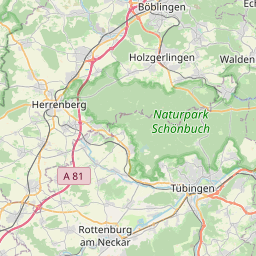






Description: Das Projekt "Turbulence-driven pressure-pumping - from above the canopy into the soil" wird/wurde gefördert durch: Deutsche Forschungsgemeinschaft. Es wird/wurde ausgeführt durch: Albert-Ludwigs-Universität Freiburg, Institut für Geo- und Umweltnaturwissenschaften, Professur für Bodenökologie.Gas transport in the atmosphere is dominated by turbulent exchange and laminar flow of air. In the soil, in contrast, such mass-flow of air is negligible; soil gas transport is governed by molecular diffusion. At first glance, the transport processes in the atmosphere and in the soil appear not to be linked with each other. However, it was observed in field studies that gas transport rates can increase by several 10% during periods of strong wind (Maier et al., 2010). This effect is due to turbulence-induced pressure-pumping, that propagates into the air-filled soil-pores. The pressure fluctuations cause a minimally oscillating air flow in the pores (Maier et al., 2012). The direct contribution of the air flow to the overall gas exchange is negligible due to the alternating direction of the flow. Yet, the movement of air is accompanied by dispersion, that leads to an enhanced transport against the underlying concentration gradient - appearing as an enhancement of diffusion. Neglecting this pressure-pumping effect can result in large errors when the gradient method or chambers are used to estimate gas fluxes from or within the soil. This uncertainty represents a problem especially for long term monitoring studies where also highly turbulent periods have to be covered. We hypothesize that the pressure-pumping effect is more important if a soil is well-aerated. To test this we will conduct field experiments at 2 forest sites and 2 agricultural sites (site-effect) and during different seasons (effect of soil water content). We will feed tracer gas into the soil to monitor the resulting effective gas transport rate. The PP-effect will be also investigated in laboratory experiments on soil samples under controlled conditions. Another objective is to assess the spatial variability of the pressure fluctuations at the soil surface and to investigate its dependence on the canopy structure. Turbulence will be monitored above and within the canopy, as well as the high-frequency pressure-fluctuations at the soil surface and in the soil. This will allow us to follow the transformation of turbulence to pressure fluctuation and to detect their propagation into the soil. Thus, we will be able to relate directly the observed transport enhancement of the tracer gas with pressure fluctuations and the oscillation of the soil air column. When a chamber is used to determine the soil gas efflux, the natural pressure fluctuations are excluded or attenuated by the closed chamber. Therefore we hypothesize that the exclusion of the pressure fluctuations leads to an underestimation of the undisturbed efflux using chamber measurements. Our objective is to derive correction factors for chamber measurements in order to compensate the (possible) methodological bias. A deeper insight into these processes will help to increase the reliability and precision of measurements of soil gas fluxes, which represent the methodological base for a large field of ecological resear
SupportProgram
Origins: /Bund/UBA/UFORDAT
Tags: Klimatologie ? Tracer ? Wind ? Monitoringdaten ? Bodenkunde ? Futtermittel ? Luftbewegung ? Pflanzenbestand ? Atmosphärische Wissenschaften ? Bodenprobe ? Bodenuntersuchung ? Datenverarbeitung ? Dispersion ? Feldstudie ? Fortpflanzung ? Gasaustausch ? Luftverkehr ? Messdaten ? Monitoring ? Studie ? Bodenfeuchte ? Weideland ? Treibhauspotenzial ? Messung ? Atmosphärische Zirkulation ? Stofftransport ? Atmosphäre ? Datenerhebung ? Turbulenz ? Wald ? Atmosphärenchemie ? Diffusion ? Belüftung ? Atmosphärischer Prozess ? Freilandversuch ? Boden ? Raumstruktur ? Kontinuierliches Verfahren ? Messgenauigkeit ? Fluss [Bewegung] ? Transportvorgang ?
Region: Baden-Württemberg
Bounding boxes: 9° .. 9° x 48.5° .. 48.5°
License: cc-by-nc-nd/4.0
Language: Englisch/English
Time ranges: 2014-02-01 - 2017-01-31
Accessed 1 times.